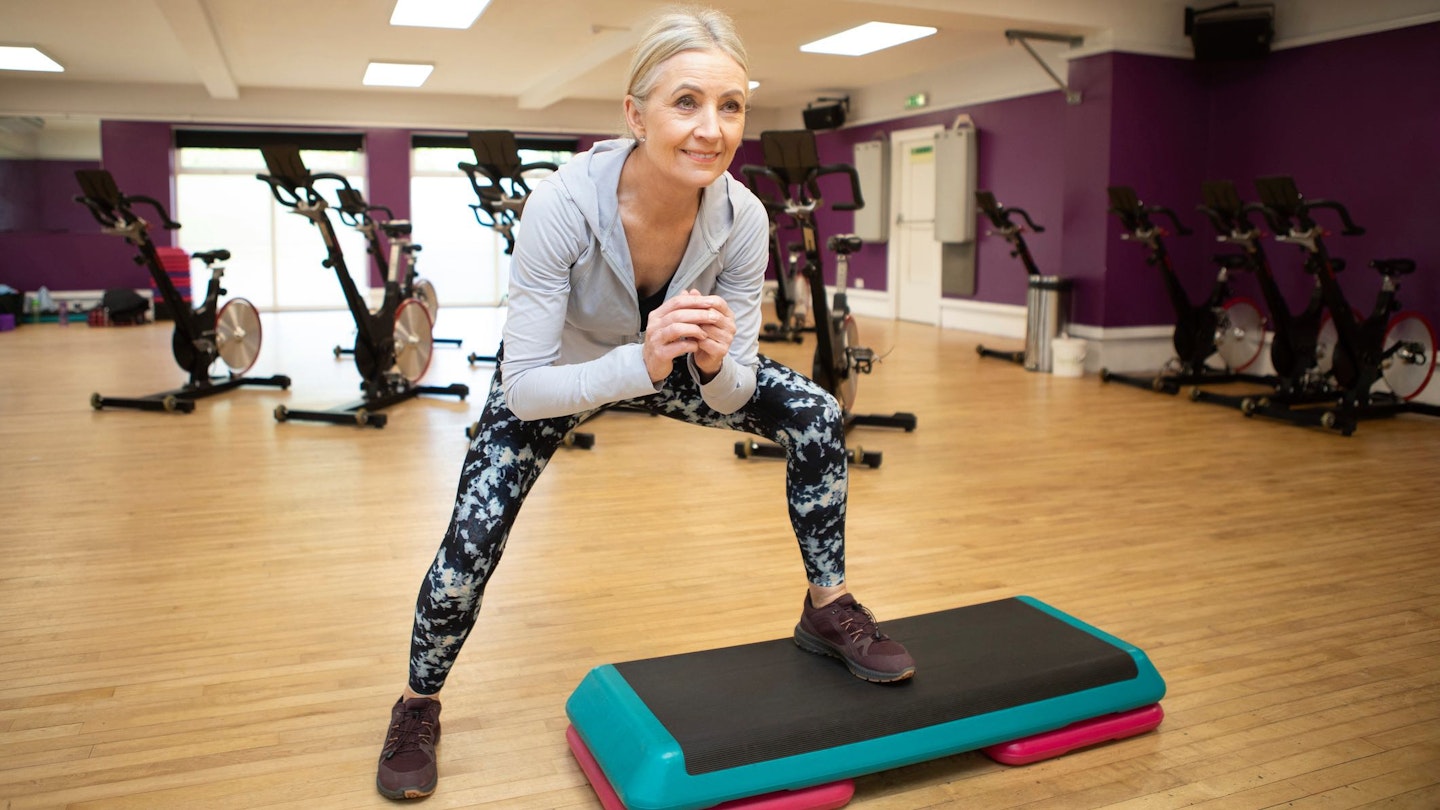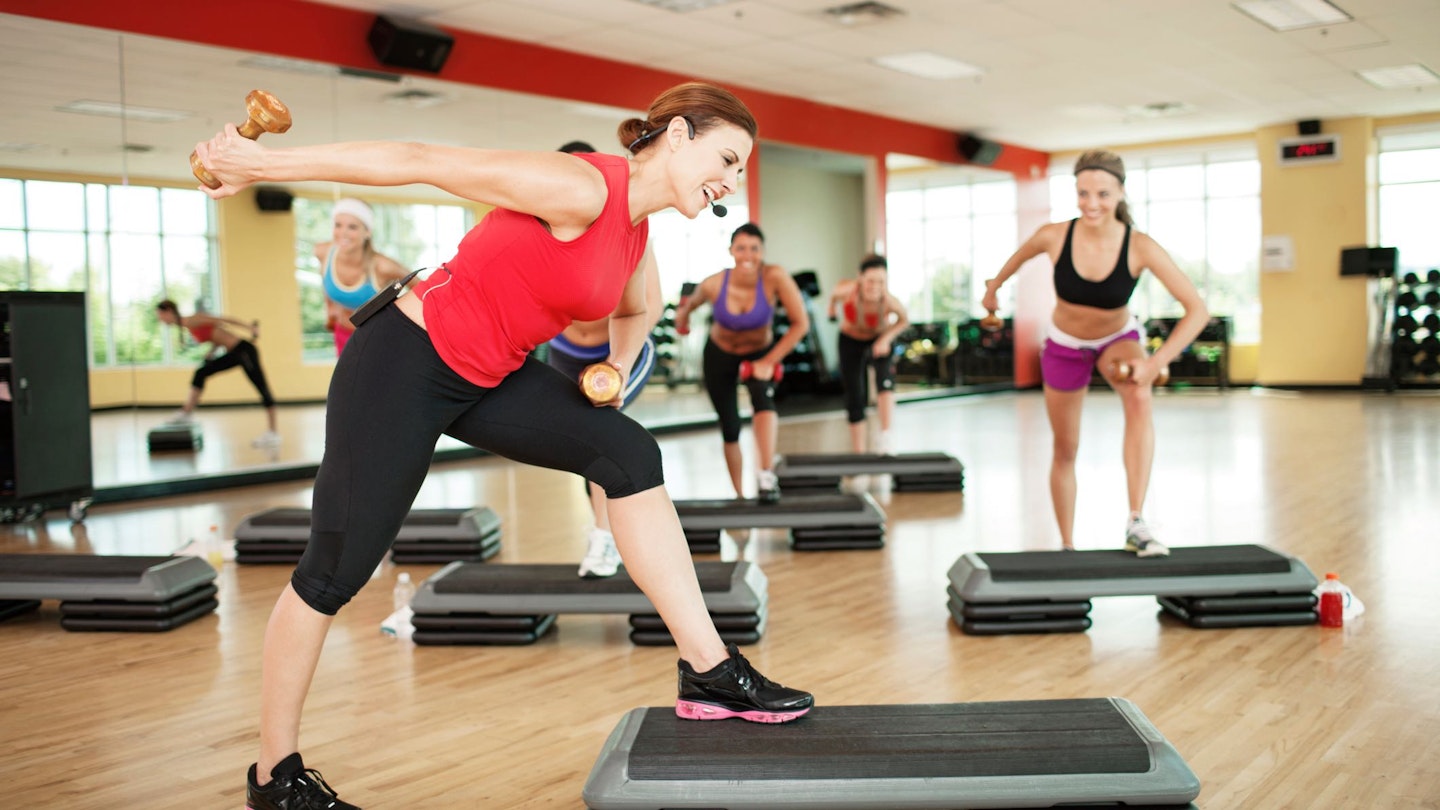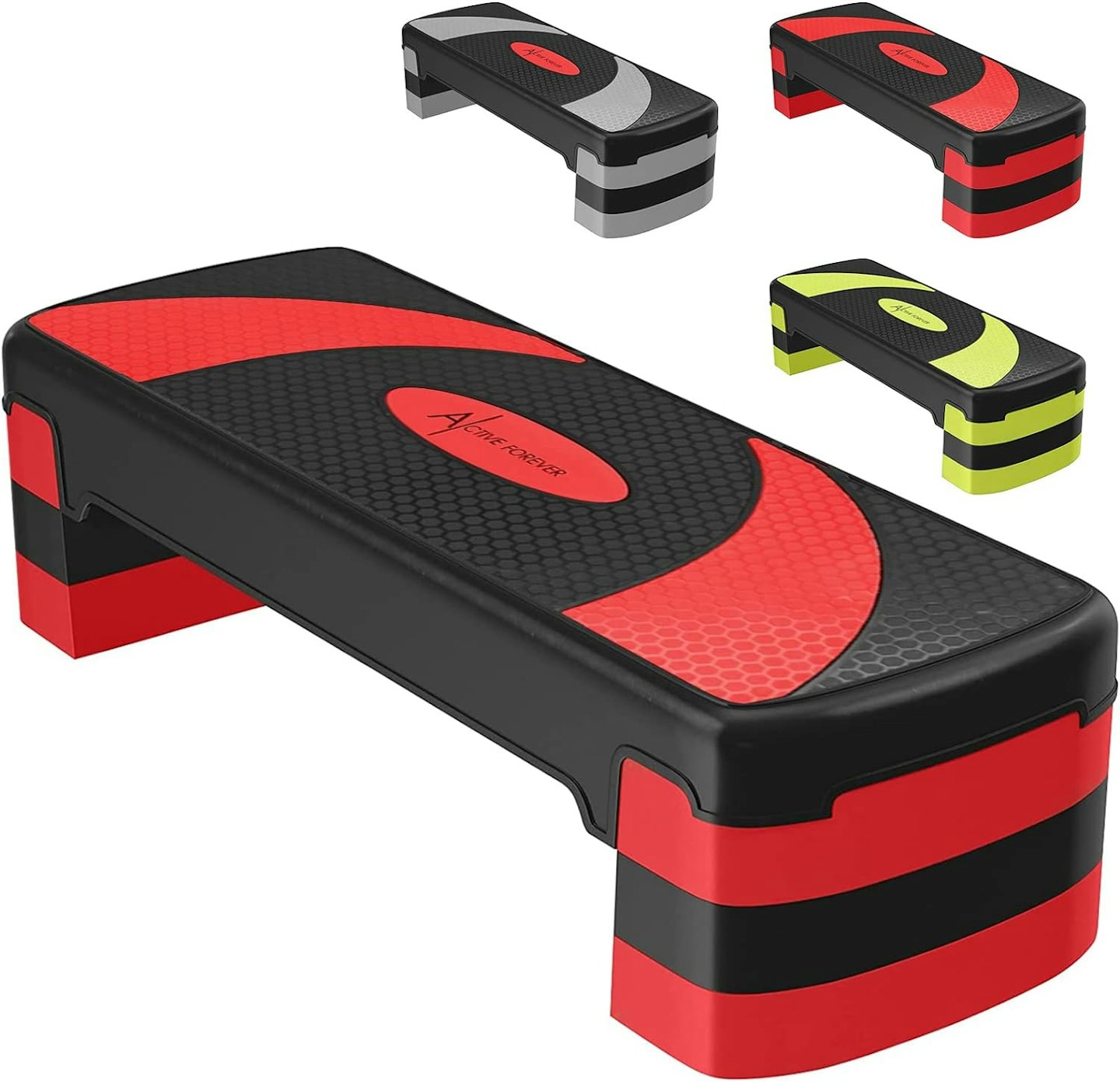Our fitness expert explores how this popular workout has evolved since the nineties
Step aerobics classes were big business in leisure centres across the country during the late eighties and early nineties. They peaked around 1995, when it’s estimated that a whopping 11.4 million people were enjoying step classes.
Since then, step aerobics suffered a dip in popularity as the way we approached fitness changed. It became distinctly ‘not cool’ to wear leotards and step along with synchronised choreography, but the aerobic step was – and still is – a great way to get fit.
The good news is that step aerobics is still being taught, although the format as we know it has changed a little to incorporate more current fitness trends. With classes once again gaining popularity, here’s all you need to know about step aerobics; what it was then, what it is now, and why it’s such a great form of exercise.
Step aerobics in the nineties
I was a child in the nineties, and my love of exercise started by watching step aerobics. I used to swim competitively, and while I was waiting for my training to start, my friend and I would sit and watch a packed room full of women stepping along to the instructor's commands.
To me, age 10, they looked impossibly glamourous, and step seemed effortless. Not very long afterwards, I started doing aerobics videos with my mum at home in the sitting room. I soon learned that aerobics was in fact harder than it looked, and following complex choreography requires some skill! Many of you may remember Victoria Wood’s hilarious take on step classes, as instructor Hayley Bailey (warning for one instance of swearing in the video).
What do you do in step aerobics?
Fitness is an ever-evolving industry, and although we learn new things about the human body all the time, some fundamentals always stay the same. Fast forward 30 years, and I’m not the little 10-year-old watching the ladies at the leisure centre, but a qualified fitness instructor who has found out firsthand the total joy that step aerobics can bring.
For a number of years, I taught a step-based fitness class aimed at people over 50, which focused on strength and cardio conditioning.
It’s now widely known that some form of strength training for women is imperative post-menopause, to preserve bone density and muscle mass. We also need to do some form of cardio exercise to keep our heart and lungs in good condition, so we can cope with everyday life with ease.
Step aerobics classes now combine a focus of both strength and cardio, and it works well because the step is such a versatile object. Dumbbells are often used in conjunction with step moves, and resistance bandsmight also form part of the class. The step itself is still used for cardio movements, such as side stepping up and over it, or running up and down it, but it’s also used for many other moves such as static lunges, or even to rest hands on during planks and press-ups. Most steps can be used with one, two or even three risers each end (the blocks that lift it from the floor), meaning you can progress or regress a movement as needed.

Step aerobics classes often follow a similar pattern; a warm-up, followed by blocks of work. The instructor might have you do all the cardio exercises first, and then strength work, or they might do it the other way around. Often, they will mix it up, which I always find is a good way to get the most out of a class, as you get a chance to recover from the cardio work with some slower moves interspersed throughout.
Step aerobics is also a great choice for home workouts. A step doesn’t cost an awful lot of money, and you can find so many different types of step workouts online. I’ve picked a few below, underneath my step recommendations.
What is a HIIT step workout?
Another form of step workout that’s gaining a legion of fans, is HIIT step. HIIT stands for high intensity interval training, and it involves working very hard for short periods of time, followed by time to recover.
A typical pattern might be 30 seconds ‘on’ (working), 10 seconds ‘off’, or 40/20. During the work intervals, you’re expected to push as hard as you can, and HIIT step is no exception. HIIT classes usually involve a lot of plyometric exercises – jumping, or short, explosive movements such as squat jumps and touch the floor, or sprint step-ups. Most instructors will happily tailor exercises to your needs, so don’t be put off if you’re not super-fit – many beginners get fantastic results from HIIT workouts.
Is step aerobics good for weight loss?
If you’re looking to lose weight, step aerobics is a fabulous choice, but it’s important to balance it out with other activities and, most importantly, adequate sleep and proper nutrition.
If you’re a beginner or returning to fitness after a long time, start with a short, simple step routine like the ones below. Take your time with it, and don’t be afraid to pause and catch your breath when needed. Going to hard, too fast will leave you feeling sore and uninspired. Weight loss is a long-term project and you’re far more likely to succeed if you enjoy both the exercise you’re doing and the food you’re eating.
It’s important to fuel your body well if you’re doing step workouts regularly, so focus on whole foods, with plenty of fruit, vegetables and protein. The protein will help your muscles build strength and recover, and it will also help you feel fuller for longer.
Is 20 minutes of step aerobics enough?
NHS guidelines say we should aim for 150 minutes of moderate intensity exercise per week, or 75 minutes of vigorous activity, and we should aim for 2 strengthening sessions within that. So yes, 20 minutes of step aerobics is adequate, provided you also add in some other activity too. You might do a step workout in the morning and take a walk in the afternoon, or you might like to follow my best bicep exercises or weight training at home.

Is step aerobics as good as walking?
In terms of cardio exercise, step aerobics can offer the same outcome as walking, which is to say it’ll improve the condition of the heart and lungs, help you to burn calories, and keep you active. Like walking, it’s good for the muscles in the legs and glutes, as well as the hip and knee joints. It can also be low-impact, so it’s a better choice of activity than running if you have any joint issues.
However, walking is a fantastic exercise for your mental wellbeing, as you gain all the benefits of being outside, too. I would suggest doing both for maximum benefit!
Step aerobics classes near me
If reading all this has put a spring in your step, it’s easy to find step aerobics classes near you. Les Mills offer a BodyStep class, taught in leisure centres across the country. Zumba Step is also a popular choice. Alternatively, you can ask at your local leisure centre for a class list.
If you’d prefer to try step aerobics at home, take a look below at my favourite steps along with some workouts to try.
Best steps for home workouts
Best value step for home workouts
 Amazon
AmazonI had this step for home use, and passed it to a friend for her home workouts. It's still gong strong, and we both love it. There's three different height options, and it's easy to add or take risers away, so you can change it within your workout if you like.
My friend lives in a flat, and she likes that the risers tuck underneath the platform for storage, so she can just slide it under the sofa out of sight.
Personally, I'd like more grip on the platform, but I do also workout barefoot, whereas my friend wears trainers and says the grip isn't an issue.
This is a great price for a great product, and would be the step I'd recommend buying for home workouts.
Pros
- Offers three different height levels
- Strong, sturdy platform
- Hidden storage for risers means it can be easily packed away
Cons
- Would like a bit more grip on platform
1.
Reebok step
Best quality step
 Amazon
Amazon The original and still the best, the Reebok step was first introduced to gyms back in 1989 for step classes. This step has three height options - 15/20/25cm, making it slightly higher than the Active Forever one. It's easily adjusted using a simple click and lock system.
It has a bubbled surface, providing excellent grip, and the feet have a sturdy, non-slip grip too.
It's more expensive than the one I have at home, but that's reflected in the quality of the product. If you want to take step seriously, and want an investment that will last, this is for you.
Pros
- Study, quality design
- Great grip
- Easy to adjust height
Cons
- Quite pricey - cheaper models are available
Best step for home gyms
The HOMCOM step is the same aerobic step you'll find in most leisure centres for group classes. It has a large platform, making it a really good option for beginners, and it also means it's versatile for things like press-ups or even lying on it for core exercises.
It comes with 4 raisers, with height options of 10, 15 or 20cm. What I like about these types of steps and the separate risers is that you can stack two on one end to slope the step, offering an even broader range of options, such as incline chest press with dumbbells.
It is quite large, though, and bulky to store. It's a fantastic option if you have the space though, and ideal for a home or garage gym setup.
Pros
- Same step as used in most leisure centres and gyms
- Large platform
- Versatile - can be used for many different exercises
Cons
- Large so can be difficult to store
Step workouts to try at home
Below are some step workouts you might like to try at home. Make sure you have water and a towel on hand, and set your step on a sturdy surface. Ensure there's enough space for you to move freely around the step, too.
A good pair of gym trainers are essential - or exercise barefoot, like I do. You need to be able to feel what your feet are doing, so don't opt for trainers with too much cushioning. As ever, consult your doctor before starting a new exercise routine if you have any pre-existing injuries or medical conditions.
Becky Fuller is a senior digital writer for Yours.co.uk. She is also a fully qualified personal trainer and strength coach, specialising in fitness and wellbeing for over 50s. Prior to joining Yours, Becky was a fitness writer for Saga, and a freelance entertainment and theatre journalist. Becky is passionate about helping people to move well and discover the many benefits of strength training.

